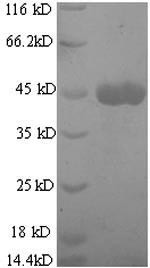Cookie preferences
This website uses cookies, which are necessary for the technical operation of the website and are always set. Other cookies, which increase the comfort when using this website, are used for direct advertising or to facilitate interaction with other websites and social networks, are only set with your consent.
Configuration
Technically required
These cookies are necessary for the basic functions of the shop.
"Allow all cookies" cookie
"Decline all cookies" cookie
CSRF token
Cookie preferences
Currency change
Customer-specific caching
FACT-Finder tracking
Individual prices
Selected shop
Session
Comfort functions
These cookies are used to make the shopping experience even more appealing, for example for the recognition of the visitor.
Note
Show the facebook fanpage in the right blod sidebar
Statistics & Tracking
Affiliate program
Conversion and usertracking via Google Tag Manager
Track device being used

If you have any questions, please use our Contact Form.
You can also order by e-mail: info@biomol.com
Larger quantity required? Request bulk
You can also order by e-mail: info@biomol.com
Larger quantity required? Request bulk
Organism: Mus musculus (Mouse). Source: E.coli. Expression Region: 105-472aa. Protein Length:... more
Product information "Collagenase 3 (Mmp13), mouse, recombinant"
Organism: Mus musculus (Mouse). Source: E.coli. Expression Region: 105-472aa. Protein Length: Full Length of Mature Protein. Tag Info: N-terminal 6xHis-tagged. Target Protein Sequence: YNVFPRTLKW SQTNLTYRIV NYTPDMSHSE VEKAFRKAFK VWSDVTPLNF TRIYDGTADI MISFGTKEHG DFYPFDGPSG LLAHAFPPGP NYGGDAHFDD DETWTSSSKG YNLFIVAAHE LGHSLGLDHS KDPGALMFPI YTYTGKSHFM LPDDDVQGIQ FLYGPGDEDP NPKHPKTPEK CDPALSLDAI TSLRGETMIF KDRFFWRLHP QQVEAELFLT KSFWPELPNH VDAAYEHPSR DLMFIFRGRK FWALNGYDIL EGYPRKISDL GFPKEVKRLS AAVHFENTGK TLFFSENHVW SYDDVNQTMD KDYPRLIEEE FPGIGNKVDA VYEKNGYIYF FNGPIQFEYS IWSNRIVRVM PTNSILWC. Purity: Greater than 90% as determined by SDS-PAGE. Endotoxin: Not test. Biological Activity: n/a. Form: Liquid or Lyophilized powder. Buffer: If the delivery form is liquid, the default storage buffer is Tris/PBS-based buffer, 5%-50% glycerol. If the delivery form is lyophilized powder, the buffer before lyophilization is Tris/PBS-based buffer, 6% Trehalose, pH 8.0. Reconstitution: We recommend that this vial be briefly centrifuged prior to opening to bring the contents to the bottom. Please reconstitute protein in deionized sterile water to a concentration of 0.1-1.0 mg/mL.We recommend to add 5-50% of glycerol (final concentration) and aliquot for long-term storage at -20 °C/-80 °C. Our default final concentration of glycerol is 50%. Customers could use it as reference. Storage: The shelf life is related to many factors, storage state, buffer ingredients, storage temperature and the stability of the protein itself. Generally, the shelf life of liquid form is 6 months at -20 °C/-80 °C. The shelf life of lyophilized form is 12 months at -20 °C/-80 °C. Notes: Repeated freezing and thawing is not recommended. Store working aliquots at 4 °C for up to one week. Relevance: Plays a role in the degradation of Extracellular domain matrix proteins including fibrillar collagen, fibronectin, TNC and ACAN. Cleaves triple helical collagens, including type I, type II and type III collagen, but has the highest activity with soluble type II collagen. Can also degrade collagen type IV, type XIV and type X. May also function by activating or degrading key regulatory proteins, such as TGFB1 and CTGF. Plays a role in wound healing, tissue rodeling, cartilage degradation, bone development, bone mineralization and ossification. Required for normal bryonic bone development and ossification. Plays a role in the healing of bone fractures via endochondral ossification. Plays a role in wound healing, probably by a mechanism that involves proteolytic activation of TGFB1 and degradation of CTGF. Plays a role in keratinocyte migration during wound healing. May play a role in cell migration and in tumor cell invasion. Reference: Role of matrix metalloproteinase 13 in both endochondral and intramembranous ossification during skeletal regeneration.Behonick D.J., Xing Z., Lieu S., Buckley J.M., Lotz J.C., Marcucio R.S., Werb Z., Miclau T., Colnot C.PLoS ONE 2:E1150-E1150(2007). Function: Plays a role in the degradation of extracellular matrix proteins including fibrillar collagen, fibronectin, TNC and ACAN. Cleaves triple helical collagens, including type I, type II and type III collagen, but has the highest activity with soluble type II collagen. Can also degrade collagen type IV, type XIV and type X. May also function by activating or degrading key regulatory proteins, such as TGFB1 and CTGF. Plays a role in wound healing, tissue remodeling, cartilage degradation, bone development, bone mineralization and ossification. Required for normal embryonic bone development and ossification. Plays a role in the healing of bone fractures via endochondral ossification. Plays a role in wound healing, probably by a mechanism that involves proteolytic activation of TGFB1 and degradation of CTGF. Plays a role in keratinocyte migration during wound healing. May play a role in cell migration and in tumor cell invasion.
| Keywords: | Mmp13, MMP-13, EC=3.4.24.-, Collagenase 3, Matrix metalloproteinase-13, Recombinant Mouse Collagenase 3 (Mmp13) |
| Supplier: | Cusabio |
| Supplier-Nr: | EP014660MO |
Properties
| Application: | Activity not tested |
| Conjugate: | No |
| Host: | E.coli |
| Species reactivity: | mouse |
| MW: | 46.5 kD |
| Purity: | >90% (SDS-PAGE) |
Database Information
| KEGG ID : | K07994 | Matching products |
| UniProt ID : | P33435 | Matching products |
| Gene ID : | GeneID 17386 | Matching products |
Handling & Safety
| Storage: | -20°C |
| Shipping: | +4°C (International: +4°C) |
Caution
Our products are for laboratory research use only: Not for administration to humans!
Our products are for laboratory research use only: Not for administration to humans!
You will get a certificate here
Viewed

